When we left off, I’d just completed a city tour of Quito, Ecuador with my friend Deidra and our guide Gabby. But the fun doesn’t stop there — we drive northeast of the capital and spend several hours visiting the equator. This monument site is called Mitad del Mundo (Middle of the World).
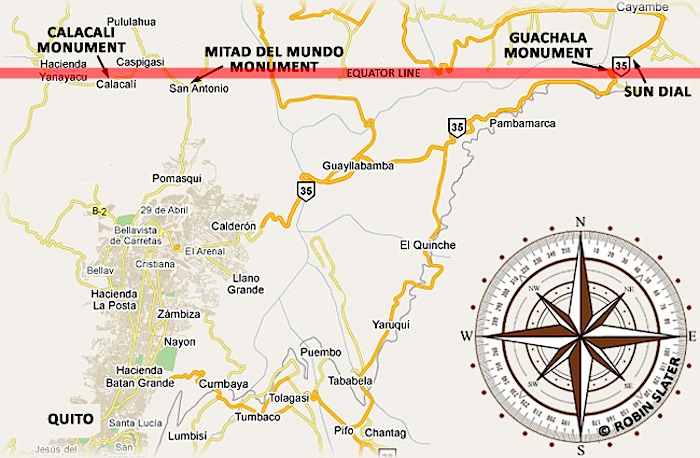
(image via)
It’s my first time standing along this famous line and my camera is at the ready.



But I have to let you in on a little secret… this isn’t actually the equator. The exact line crosses through a ravine several hundred feet away. Since the equator falls over a long stretch of Ecuador you’d think the powers that be would have situated the monument on a less treacherous part of the line. But apparently measuring techniques weren’t as exact back in the early 1900s when an original monument was erected, and when this current structure replaced it in 1979 the planners made no effort to adjust the location. (This NYT article explains it nicely.)
Luckily for tourists, there is a private museum on the actual equator called Museo Intinan and it ROCKS. They have interactive displays that demonstrate how standing on the exact equator (GPS 00°00’00”) changes balance, gravity, and even your body weight.


This is our outstanding tour guide for the afternoon.

The first display demonstrates the Coriolis effect — how water swirls in different directions above and below the equator. In the southern hemisphere water swirls clockwise and in the northern hemisphere it swirls counter-clockwise; this is the reason hurricanes rotate in opposite directions in the two hemispheres.
Our guide takes a sink basin full of water and empties it above, below, and then exactly ON the equator line. Sure enough, water flows differently each time! When she empties it directly on the equator the water doesn’t spin at all and merely drops straight down. Fascinating.

I’ve come across a few websites that dispute this as a trick, saying that the way the plug is pulled or imperfections in the sink can influence water direction. But this site sums it up:
“…the Coriolis effect does play a role. It’s just really tiny relative to all these other effects. It’s about 10 million the size of the effect of gravity. So, if you have a perfect basin, with completely still water, then the Coriolis force will make the water swirl opposite directions in the two hemispheres. This was demonstrated by Ascher Shapiro, a researcher at MIT in 1962.” (via)
Our next activity is to balance an egg on a nailhead — supposedly this is easier to accomplish on the equator line.

Deidra does it perfectly!

But then I try to balance an egg and this happens…

Whoops.
Eventually I figure it out and they give me a certificate. Silly but fun!
Just like with the water swirl direction, a simple on-line search reveals this may be a myth too — apparently your luck at balancing an egg isn’t really different on or off the equator.
Next the guide demonstrates how our own balance is different at the equator too. She has Deidra and I perform activities involving strength and balance so we can experience first hand how it’s different on either side of the big red line. For example, she has me press my thumb and pointer finger together while she tries to force them apart — which she does easily off the equator, but I am too strong for her to do this when standing ON the equator. This is the most convincing of the experiments because I can literally feel the difference.


This sign explains that our body weight changes a TINY bit on the equator. I have doubts about this one.

This polka-dotted hen roams the property. Actually, I’m not sure it’s a hen… if anyone can help me out here, I’d appreciate it! UPDATE: mystery solved, it’s actually a Guinea Fowl. Thanks to Flory who commented below with the answer!

This globe shows how the equator cuts through Ecuador. It actually passes through another part of the country — Isabela Island in the Galapagos — but I didn’t travel that far north on the island during my time there.

So what do you think? Are these equator experiments total nonsense, or do they carry weight?
…or is their weight relative to how close one is standing to the big line? (I couldn’t resist.)

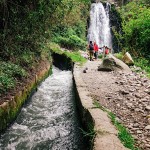
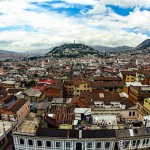

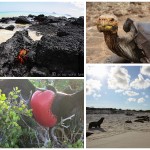
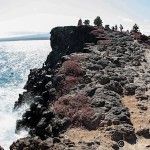

OMG…the “hen” looks just like Javier from the Thanksgiving buffet. Could it be his role model?
Xo,
UD.
Ahhhh! I knew the “hen” reminded me of something but I couldn’t place my finger on it. Yes, Javier is his doppelgänger!!
xo E
“Doppelgänger” – nice selection 😉
Xo,
UD.
PS…I jumped into your blog too quickly and missed the headline initially. I thought for a moment that you diverted from the South Pacific to Ecuador (entirely possible)!
That would be a plot twist in the story of my travels! Still on track for now
The “hen” is a Guinea Fowl Mystery solved! :))
Thank you Flory!!! That is awesome! I’m going back to add it into the post now.